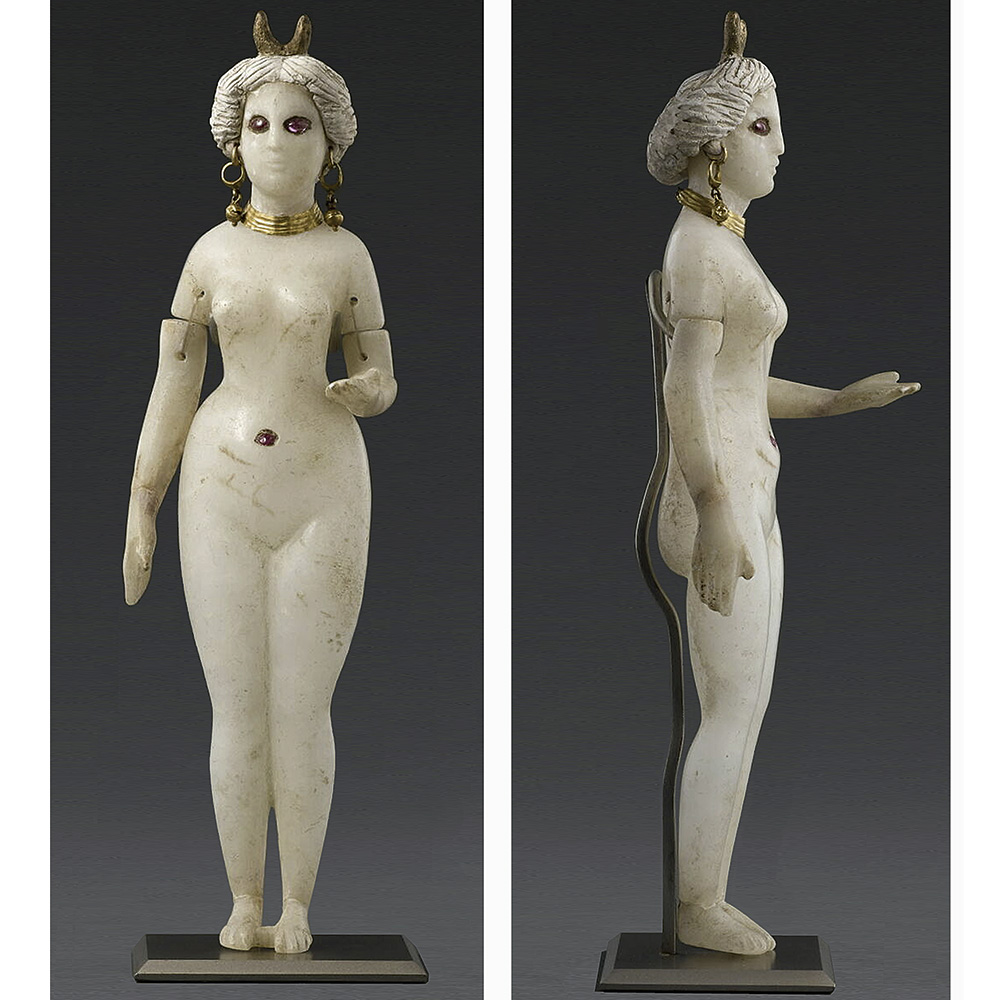April 2023 (127.2)
Article
Burying the Alabaster Goddess in Hellenistic Babylonia: Religious Power, Sexual Agency, and Accessing the Afterlife Through Ishtar-Aphrodite Figurines from Seleucid-Parthian Iraq
This article presents a new evaluation of alabaster figurines wearing crescent crowns, identified as the syncretized deity Ishtar-Aphrodite, from the Seleucid-Parthian period in Babylonia (ca. second century BCE–first century CE). Unlike previous studies, this article recontextualizes the alabaster goddesses as the most opulent and explicitly divine versions of two popular types in the broader, flourishing figurine tradition of Hellenistic Babylonia. Miniaturization theory, which elucidates the sensory and perceptual effects of small-scale objects, forms the methodological basis of this analysis, in dialogue with archaeological data and textual sources from Mesopotamia and the wider Hellenistic world. Using this approach, I argue that these figurines were open to identification as both goddesses and mortals so that a girl or woman could use them to construct her own sexual agency and facilitate her journey to the afterlife, even as she invoked the goddess’ assistance with both. The few unambiguous goddess figurines were depicted with crescent crowns to link their elite owners to the Babylonian temples and their prestigious astrological knowledge. This article makes the contribution of articulating the significant intertwining of Greek and Babylonian cultural values and religious beliefs that shaped these figurines, which were hybrid in more than just style.
More articles like this:
Sculpture • Cultural Interaction • Small Finds • Religion/Cult • Hellenistic Period • Terracottas • Near East > Mesopotamia